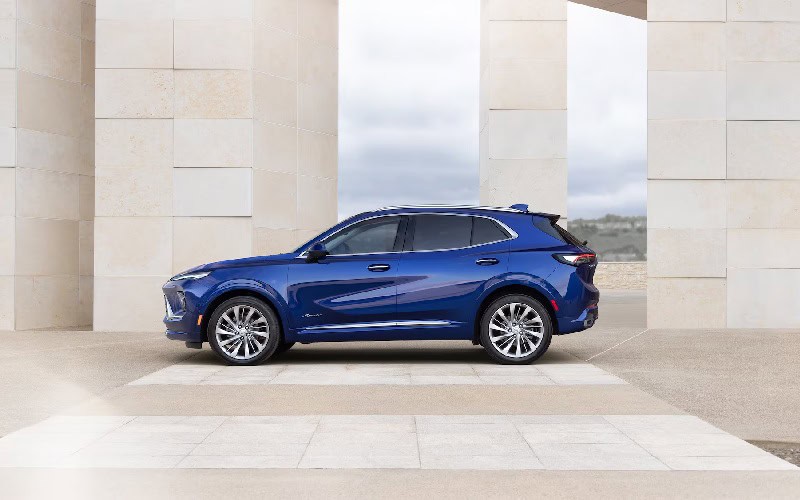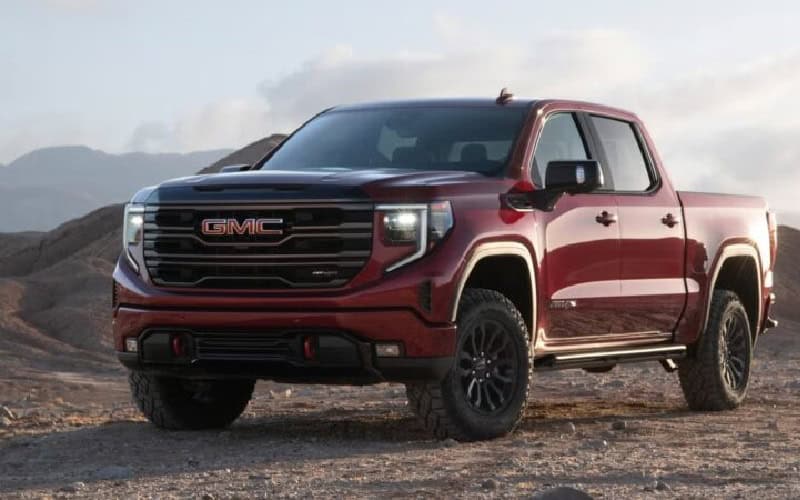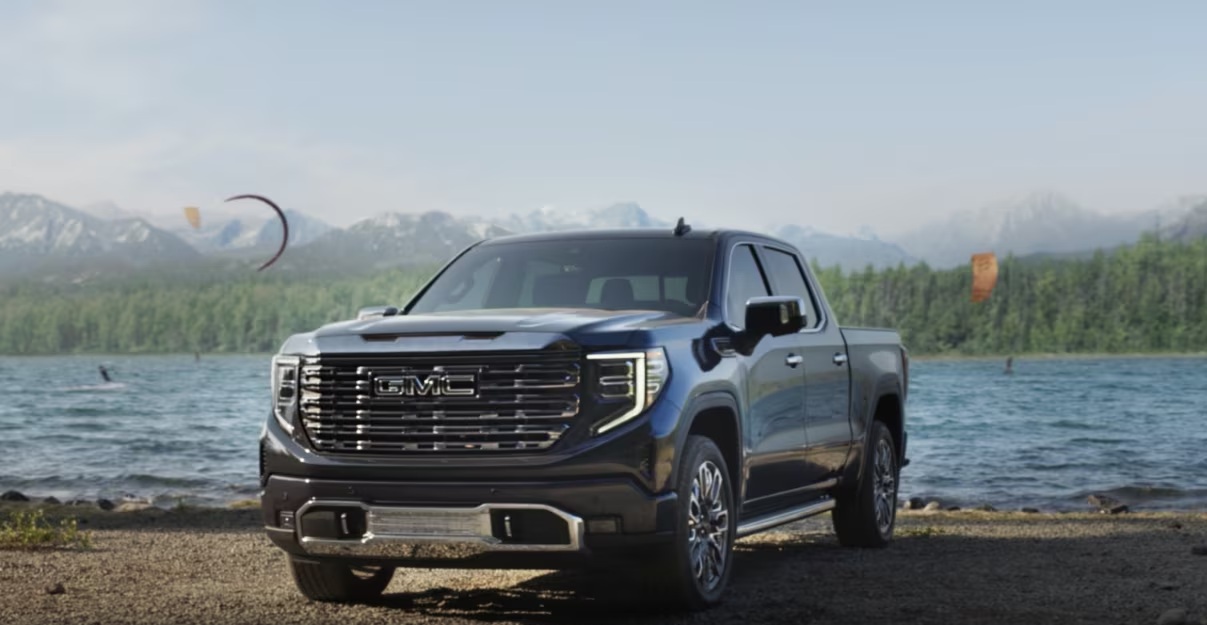Buick Envista Sport Touring: How the 3-Cylinder Engine Works
The Buick Envista Sport Touring has been making waves in the automotive industry with its sleek design and efficient powertrain. At the heart of this compact crossover lies a sophisticated 3-cylinder engine that combines performance with fuel efficiency. Overview of the Buick Envista Engine The Buick Envista Sport Touring has a 1.2-liter turbocharged inline 3-cylinder … Continued
The Buick Envista Sport Touring has been making waves in the automotive industry with its sleek design and efficient powertrain. At the heart of this compact crossover lies a sophisticated 3-cylinder engine that combines performance with fuel efficiency.

Overview of the Buick Envista Engine
The Buick Envista Sport Touring has a 1.2-liter turbocharged inline 3-cylinder engine. This compact powerplant delivers an impressive 136 horsepower at 5,000 rpm and 162 lb-ft of torque at 2,500 rpm.
Key Specifications:
- Engine Type: 1.2L Turbocharged Inline-3
- Horsepower: 136 hp @ 5,000 rpm
- Torque: 162 lb-ft @ 2,500 rpm
- Valvetrain: DOHC (Double Overhead Camshaft) with 12 valves
- Fuel System: Direct Injection
- Compression Ratio: 10.5:1 (estimated)
The Basics of a 3-Cylinder Engine
Before diving into the specifics of the Buick Envista engine, it’s essential to understand the fundamental principles of a 3-cylinder engine.
Cylinder Configuration
A 3-cylinder engine, as the name suggests, consists of three cylinders arranged in a straight line (inline configuration). Each cylinder contains a piston that moves up and down, connected to a crankshaft via connecting rods. This arrangement is more compact than a traditional 4-cylinder engine, allowing for a smaller engine bay and potentially more interior space.
Four-Stroke Cycle
Like most modern gasoline engines, the Envista 3-cylinder operates on the four-stroke cycle:
- Intake Stroke: The piston moves down, drawing in air and fuel.
- Compression Stroke: The piston moves up, compressing the air-fuel mixture.
- Power Stroke: The spark plug ignites the compressed mixture, forcing the piston down.
- Exhaust Stroke: The piston moves up, expelling the burnt gases.
In a 3-cylinder engine, these strokes are offset among the cylinders to provide a balanced power delivery.
Turbocharging: Boosting Performance
One of the key features of the Buick Envista Sport Touring engine is its turbocharger. This component plays a crucial role in enhancing both power output and efficiency.
How Turbocharging Works
- Exhaust Gas Utilization: The turbocharger uses exhaust gases to spin a turbine.
- Air Compression: This turbine is connected to a compressor that forces more air into the engine’s cylinders.
- Increased Power Density: More air means more fuel can be burned, resulting in higher power output from a smaller engine displacement.
The turbocharger in the Envista engine allows it to produce power comparable to larger naturally aspirated engines while maintaining better fuel efficiency.
Direct Fuel Injection
The Envista Sport Touring engine employs direct fuel injection technology, which offers several advantages:
- Precise Fuel Delivery: Fuel is injected directly into the combustion chamber at high pressure.
- Improved Efficiency: This precision allows for better control over the air-fuel mixture, optimizing combustion.
- Enhanced Cooling: The direct fuel injection cools the intake charge, allowing for higher compression ratios.
Variable Valve Timing
The double overhead camshaft (DOHC) design with variable valve timing allows for optimized engine performance across different RPM ranges:
- Low RPM Efficiency: The valve timing can be adjusted to improve fuel economy and low-end torque at lower engine speeds.
- High RPM Performance: As engine speed increases, the valve timing can be altered to maximize power output.
This flexibility contributes to the engine’s ability to deliver efficiency and performance when needed.
Overcoming Vibration Challenges
One of the inherent challenges of a 3-cylinder engine is managing vibrations. With an odd number of cylinders, these engines can be prone to more vibration than their 4-cylinder counterparts. Buick engineers have implemented several strategies to mitigate this issue:
- Balanced Crankshaft Design: The crankshaft is carefully weighted to counteract primary imbalances.
- Engine Mounts: Sophisticated engine mounts help isolate engine vibrations from the vehicle’s cabin.
- Flywheel Engineering: A specially designed flywheel helps smooth out power delivery and reduce vibration.
These measures ensure that the Envista delivers a smooth and refined driving experience despite its 3-cylinder configuration.
Fuel Efficiency and Emissions
The 3-cylinder engine in the Buick Envista Sport Touring has fuel efficiency in mind. According to EPA estimates, it achieves:
- City MPG: 8.4 L/100 km
- Highway MPG: 7.4 L/100 km
- Combined MPG: 7.8 L/100 km
These figures are impressive for a crossover SUV and are partly attributable to the engine’s design:
- Reduced Friction: Fewer cylinders mean less internal friction, improving efficiency.
- Lightweight Design: The compact engine reduces overall vehicle weight, improving fuel economy.
- Start-Stop Technology: While not exclusive to 3-cylinder engines, the Envista likely employs start-stop technology to save fuel in city driving conditions.
Performance Characteristics
Despite its focus on efficiency, the Envista 3-cylinder engine doesn’t compromise on performance:
- Low-End Torque: The turbocharger helps deliver strong low-end torque, making the vehicle feel responsive in everyday driving situations.
- Linear Power Delivery: Careful tuning ensures power is delivered smoothly across the RPM range.
- Quick Throttle Response: The combination of turbocharging and direct injection allows rapid throttle response.
Maintenance and Longevity
The simplicity of a 3-cylinder engine can offer some advantages in terms of maintenance:
- Fewer Components: With one less cylinder, fewer parts can potentially fail.
- Simplified Cooling System: The smaller engine size can lead to a more straightforward cooling system design.
- Weight Distribution: The lighter engine can improve overall vehicle balance, potentially reducing wear on suspension components.
However, it’s important to note that the turbocharger adds complexity and may require additional maintenance considerations over the vehicle’s life.
Comparison to 4-Cylinder Alternatives
To fully appreciate the 3-cylinder engine in the Buick Envista Sport Touring, it’s worth comparing it to traditional 4-cylinder alternatives:
Advantages of the 3-Cylinder:
- Compact size allows for better space utilization
- Potentially better fuel efficiency due to reduced friction and weight
- Often lighter, contributing to better vehicle dynamics
Potential Drawbacks:
- May produce more vibration (though mitigated through engineering)
- Could be perceived as less refined by some drivers
- Might struggle more when heavily loaded compared to larger engines
The Future of 3-Cylinder Engines
The adoption of 3-cylinder engines like the one in the Buick Envista represents a broader trend in the automotive industry:
- Downsizing: Manufacturers increasingly turn to smaller, turbocharged engines to meet efficiency standards without sacrificing performance.
- Hybridization Potential: 3-cylinder engines are often well-suited for hybrid powertrains, which could be a future direction for vehicles like the Envista.
- Continuous Improvement: As technology advances, we can expect further refinements in 3-cylinder engine design, potentially overcoming current limitations.
Buick Envista Sport Touring: An Efficient and Capable Crossover
The 3-cylinder engine in the Buick Envista Sport Touring is a testament to modern automotive engineering. It balances the demands of performance, efficiency, and refinement demands in a compact package. Buick has created an engine that defies traditional expectations of small-displacement powerplants by leveraging technologies like turbocharging, direct injection, and variable valve timing.
As consumers become more conscious of fuel efficiency and environmental impact, engines like this will likely play an increasingly important role in the automotive landscape. The Buick Envista 3-cylinder engine demonstrates that with clever engineering, it’s possible to create a vehicle that’s both enjoyable to drive and economical to own.
Whether the 3-cylinder engine will become the new standard for compact crossovers remains to be seen. Still, the Buick Envista certainly makes a compelling case for this efficient and capable powertrain configuration.


